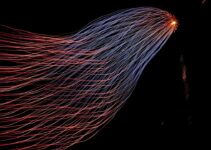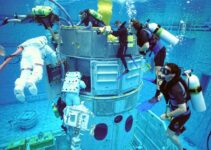As I delve into the world of neural networks, I find myself captivated by their intricate design and functionality. At their core, neural networks are computational models inspired by the human brain’s architecture. They consist of interconnected nodes, or neurons, organized in layers.
The input layer receives data, while the hidden layers process this information through weighted connections, ultimately leading to an output layer that produces predictions or classifications. This structure allows neural networks to learn complex patterns and relationships within data, making them powerful tools for various applications. The beauty of neural networks lies in their ability to adapt and improve over time.
When I think about how they function, I am reminded of the way we learn from experience. Just as I refine my skills through practice and feedback, neural networks adjust their weights based on the errors they make during training. This process, known as backpropagation, enables them to minimize the difference between predicted and actual outcomes.
As I explore this fascinating technology further, I realize that understanding the underlying principles of neural networks is essential for harnessing their full potential in solving complex problems.
Key Takeaways
- Neural networks are a type of machine learning model inspired by the human brain, consisting of interconnected nodes that process and analyze data.
- Training neural networks involves feeding them with large amounts of data to adjust the weights and biases of the connections between nodes, allowing them to make accurate predictions or classifications.
- Optimizing neural networks involves techniques such as regularization, dropout, and batch normalization to improve their performance and prevent overfitting.
- Neural networks can be applied to real-world problems such as image and speech recognition, natural language processing, and autonomous vehicles.
- Challenges in neural network implementation include data quality, computational resources, and interpretability of the model’s decisions.
Training Neural Networks
Training a neural network is a multifaceted process that requires careful consideration and execution.
This dataset is then divided into training, validation, and test sets to ensure that the model can generalize well to unseen data.
As I feed the training data into the network, I observe how it learns to recognize patterns and make predictions. The iterative nature of this process is both exhilarating and challenging, as I witness the model’s performance improve with each epoch. One of the critical aspects of training is selecting the right hyperparameters, such as learning rate, batch size, and the number of epochs.
These parameters significantly influence how well the network learns from the data. I often find myself experimenting with different configurations, analyzing their impact on the model’s accuracy and convergence speed. Additionally, I must be vigilant about overfitting, where the model performs exceptionally well on training data but fails to generalize to new examples.
To combat this issue, I employ techniques like dropout and regularization, which help maintain a balance between learning and generalization.
Optimizing Neural Networks
Once I have trained my neural network, the next step is optimization. This phase is crucial for enhancing the model’s performance and ensuring it operates efficiently in real-world scenarios. One of the first strategies I consider is fine-tuning the architecture of the network itself.
By adjusting the number of layers and neurons within each layer, I can create a more tailored model that better captures the nuances of my specific dataset. This architectural optimization often leads to significant improvements in accuracy and efficiency. In addition to architectural changes, I also explore various optimization algorithms that can accelerate the training process.
While stochastic gradient descent (SGD) is a popular choice, I have found that advanced techniques like Adam or RMSprop can yield faster convergence and better results in many cases. These algorithms adaptively adjust the learning rate based on past gradients, allowing for more efficient exploration of the loss landscape. As I experiment with these optimizers, I am continually amazed by how small adjustments can lead to substantial gains in performance.
Applying Neural Networks to Real-World Problems
| Problem | Neural Network Application | Performance Metric |
|---|---|---|
| Image Recognition | Convolutional Neural Networks (CNN) | Accuracy, Precision, Recall |
| Natural Language Processing | Recurrent Neural Networks (RNN), Transformer | BLEU score, Perplexity |
| Time Series Forecasting | Long Short-Term Memory (LSTM) | Mean Absolute Error (MAE), Root Mean Square Error (RMSE) |
| Anomaly Detection | Autoencoders | Area Under the ROC Curve (AUC), F1 Score |
The true power of neural networks becomes evident when I apply them to real-world problems across various domains. In healthcare, for instance, I have witnessed how these models can analyze medical images to detect diseases such as cancer at an early stage. By training a convolutional neural network (CNN) on thousands of labeled images, I can create a system that assists radiologists in making more accurate diagnoses.
The potential for improving patient outcomes through such applications is both inspiring and motivating. Beyond healthcare, neural networks have made significant strides in natural language processing (NLP). As I explore this field, I find myself fascinated by how recurrent neural networks (RNNs) and transformers can understand and generate human language.
From chatbots that provide customer support to translation services that bridge language barriers, these models are transforming how we interact with technology. The ability to analyze sentiment in social media posts or generate coherent text based on prompts showcases the versatility of neural networks in addressing complex linguistic challenges.
Overcoming Challenges in Neural Network Implementation
Despite their remarkable capabilities, implementing neural networks is not without its challenges. One of the primary hurdles I encounter is the need for vast amounts of high-quality data. In many cases, obtaining labeled datasets can be time-consuming and expensive.
As I navigate this obstacle, I often turn to data augmentation techniques to artificially expand my dataset by creating variations of existing samples. This approach not only helps improve model robustness but also mitigates the risk of overfitting. Another significant challenge lies in the computational resources required for training deep neural networks.
As I work with larger models and datasets, I find myself grappling with issues related to memory usage and processing power. To address these concerns, I leverage cloud computing platforms that offer scalable resources tailored for machine learning tasks. Additionally, optimizing my code and utilizing techniques like model pruning can help reduce the computational burden without sacrificing performance.
Ethical Considerations in Neural Network Development
As I immerse myself in neural network development, I am increasingly aware of the ethical implications associated with this technology. One pressing concern is bias in training data, which can lead to discriminatory outcomes when models are deployed in real-world applications. It is essential for me to critically evaluate the datasets I use and ensure they are representative of diverse populations.
By actively seeking out balanced data sources and implementing fairness metrics during evaluation, I strive to create models that promote equity rather than perpetuate existing biases. Moreover, transparency in neural network decision-making is another ethical consideration that weighs heavily on my mind. As these models become more complex, understanding their inner workings can be challenging even for experts.
This opacity raises questions about accountability and trust when deploying AI systems in sensitive areas such as criminal justice or hiring practices. To address this issue, I advocate for explainable AI techniques that provide insights into how models arrive at their predictions. By fostering transparency, I hope to build trust among users and stakeholders while ensuring responsible AI deployment.
Future Trends in Neural Network Technology
Looking ahead, I am excited about the future trends shaping neural network technology. One area that particularly intrigues me is the rise of unsupervised learning methods. As researchers develop algorithms capable of learning from unlabelled data, the potential for discovering hidden patterns and insights becomes vast.
This shift could revolutionize fields where labeled data is scarce or difficult to obtain, enabling more widespread adoption of machine learning solutions. Additionally, advancements in hardware technology are poised to enhance neural network capabilities significantly. The emergence of specialized processors like GPUs and TPUs has already accelerated training times dramatically.
As these technologies continue to evolve, I anticipate even greater efficiency gains that will allow me to tackle more complex problems with larger datasets than ever before. The integration of neuromorphic computing—mimicking brain-like processing—also holds promise for creating more efficient and powerful neural networks.
Harnessing the Potential of Neural Networks
In conclusion, my journey through the realm of neural networks has been both enlightening and transformative. From understanding their foundational principles to applying them in real-world scenarios, I have witnessed firsthand their immense potential to solve complex problems across various domains. However, as I continue to explore this technology, I remain mindful of the challenges and ethical considerations that accompany its development.
By embracing a responsible approach to neural network implementation—one that prioritizes fairness, transparency, and accountability—I believe we can harness their power for good. As we stand on the brink of exciting advancements in this field, I am eager to contribute to a future where neural networks not only enhance our capabilities but also align with our values as a society. The possibilities are endless, and together we can unlock new horizons in artificial intelligence that benefit humanity as a whole.
FAQs
What are neural networks?
Neural networks are a type of machine learning algorithm that is inspired by the way the human brain processes information. They consist of interconnected nodes, or “neurons,” that work together to process and analyze complex data.
How do neural networks work?
Neural networks work by taking in input data, processing it through multiple layers of interconnected neurons, and producing an output. Each neuron applies a mathematical operation to the input data and passes the result to the next layer of neurons.
What are the applications of neural networks?
Neural networks are used in a wide range of applications, including image and speech recognition, natural language processing, financial forecasting, and medical diagnosis. They are also used in autonomous vehicles, robotics, and many other fields.
What are the different types of neural networks?
There are several types of neural networks, including feedforward neural networks, convolutional neural networks (CNNs), recurrent neural networks (RNNs), and long short-term memory (LSTM) networks. Each type is designed for specific tasks and has its own unique architecture.
What are the advantages of using neural networks?
Neural networks are capable of learning complex patterns and relationships in data, making them well-suited for tasks that involve large amounts of unstructured data. They can also adapt to new information and improve their performance over time.
What are the limitations of neural networks?
Neural networks require large amounts of data to train effectively, and they can be computationally intensive and time-consuming to train. They can also be prone to overfitting, where they perform well on training data but poorly on new, unseen data.
Get more stuff like this
Subscribe to our mailing list and get interesting stuff and updates to your email inbox.
Thank you for subscribing.
Something went wrong.




